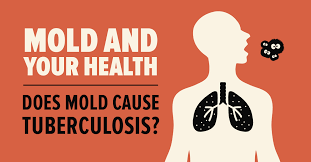Mold, a type of fungus found both indoors and outdoors, plays a significant role in nature but can become a nuisance and even a health hazard when it grows indoors. Understanding the causes, effects, and prevention of mold is crucial for maintaining a healthy environment in homes and workplaces.
Causes of Mold Growth
Excess Moisture: Leaking pipes, condensation, or floods can create moist environments ideal for mold growth.
Poor Ventilation: Areas with poor air circulation, such as bathrooms, kitchens, and basements, are more prone to mold growth.
High Humidity: Humid climates or indoor spaces with high humidity levels provide favorable conditions for mold.
Effects of Mold
The presence of mold indoors can lead to various health issues, especially for individuals with allergies, asthma, or compromised immune systems.
Respiratory Issues: Mold spores can trigger allergic reactions or asthma attacks in sensitive individuals.
Skin Irritation: Contact with mold can cause skin rashes or irritation.
Sinus Congestion: Mold exposure may lead to nasal congestion, sneezing, and sinusitis.
Infections: Some molds produce toxins (antitoxins) that can cause infections or exacerbate existing health conditions.
Beyond health effects, mold can also damage property. It can discolor surfaces, weaken structures, and cause unpleasant odors, leading to costly repairs and reduced property value.
Preventing Mold Growth
Preventing mold growth requires addressing moisture issues and maintaining proper ventilation. Here are effective preventive measures:
Control Moisture: Repair leaks promptly, use exhaust fans in kitchens and bathrooms, and use a dehumidifier if necessary to maintain indoor humidity below 60%.
Improve Ventilation: Ensure adequate ventilation in all areas of the home, especially in rooms prone to moisture buildup.
Monitor Indoor Humidity: Use a hygrometer to measure humidity levels and take action if they exceed recommended levels.
Regular Maintenance: Inspect and clean VAC systems, gutters, and downspouts regularly to prevent moisture buildup.
Removing Mold
If mold is already present, it’s essential to remove it promptly and safely to prevent further spread. Here’s how to handle mold removal:
Safety Precautions: Wear protective gear such as gloves, goggles, and an N95 respirator to avoid exposure to mold spores.
Cleaning: Use a solution of soap and water or a commercial mold cleaner to scrub mold off hard surfaces. Porous materials like drywall or carpeting may need to be replaced if mold growth is extensive.
Drying: Thoroughly dry cleaned areas to prevent mold from returning.
Professional Help: For extensive mold growth or if you’re unsure about handling it yourself, seek professional mold remediation services.
Conclusion
Mold growth indoors is a common issue that can have significant consequences for both property and health. By understanding the causes of mold, its effects, and how to prevent and remove it, homeowners can create a healthier living environment. Regular maintenance, prompt repairs of leaks, and adequate ventilation are key to keeping mold at bay. Being proactive about mold prevention not only preserves the integrity of your home but also ensures the well-being of its occupants.
In conclusion, while mold is a persistent issue, it can be effectively managed with proper care and attention to moisture control and ventilation. By taking preventive measures and addressing mold promptly, homeowners can enjoy a mold-free and healthy indoor environment.
